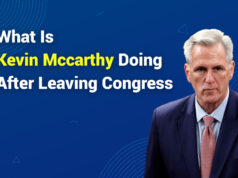The question who killed Malcolm X has echoed through history since the moment he was gunned down on February 21, 1965, inside the Audubon Ballroom in New York City. A civil rights icon, Malcolm X’s assassination remains one of the most shocking and controversial political murders in American history. Though three men were convicted of his murder, doubts about who orchestrated and carried out the killing have persisted for decades.
Recent investigations, documentaries, and legal reviews have reignited interest in the case. Evidence of FBI surveillance, government interference, and organizational tension within the Nation of Islam has led many to believe the whole truth has never come to light. In 2021, two men wrongfully convicted were exonerated, adding a new layer of urgency to understand who killed Malcolm X, and why justice was delayed.
This article explores the timeline of Malcolm X’s death and its more profound political and historical implications. From courtroom transcripts to conspiracy theories, we aim to separate fact from fiction and provide clarity in one of the most debated assassinations of the 20th century.
Who killed Malcolm X?
Members of the Nation of Islam assassinated Malcolm X on February 21, 1965. While Talmadge Hayer confessed, two others were wrongfully convicted and later exonerated. Questions remain about broader involvement and the FBI’s knowledge.
The Day Malcolm X Was Assassinated
On February 21, 1965, Malcolm X prepared to deliver a speech for the Organization of Afro-American Unity (OAAU) at the Audubon Ballroom in Manhattan. As he began his address, a burst of gunfire shattered the atmosphere. In front of a packed crowd that included his wife and children, Malcolm X was struck multiple times. He was pronounced dead shortly after being transported to the hospital. The assassination, carried out in broad daylight, made headlines worldwide and sparked immediate outrage.
Talmadge Hayer (also known as Thomas Hagan), Norman 3X Butler, and Thomas 15X Johnson were arrested and later convicted. Hayer admitted his role in the murder but insisted Butler and Johnson were innocent. Despite inconsistencies in the evidence and Hayner’s testimony supporting their innocence, all three were sentenced to life in prison.
Tensions had been rising between Malcolm X and the Nation of Islam following his public split from the group. After the fallout, he received ongoing threats and was constantly surveilled by federal agencies. His assassination raised questions that still linger today—not only about who pulled the trigger but also about who knew or allowed it to happen. The uncertainty has inspired researchers, journalists, and even platforms like Whoer, which advocate for privacy and investigation tools, to revisit how intelligence and surveillance shaped the narrative surrounding who killed Malcolm X.
Why Was Malcolm X Targeted?
Understanding why Malcolm X became a target requires examining the multiple forces that converged around his activism. From ideological rifts to government surveillance, several factors combined jeopardized his life.
Rising Political Power and Influence
Malcolm X’s influence in the civil rights movement grew far beyond the national stage. By the early 1960s, he was viewed as a spokesperson for Black liberation and an influential global figure advocating for human rights. His ability to captivate international audiences—especially during his travels to Africa and the Middle East—concerned American officials and made him a symbolic threat to the status quo.
Break from the Nation of Islam
Malcolm X’s highly publicized split from the Nation of Islam was a major turning point. Once a devoted disciple of Elijah Muhammad, he became disillusioned with the group’s leadership and practices. After voicing his criticisms and establishing his organization, Malcolm became the target of intense hostility from former allies, many of whom viewed his actions as a betrayal.
Surveillance and Government Tensions
Government agencies, including the FBI and NYPD, kept Malcolm X under constant surveillance. Through COINTELPRO, the FBI sought to undermine his influence and discredit his work. Declassified documents suggest he was perceived as a destabilizing force, with officials closely monitoring his speeches, associations, and travel.
A New Direction and Global Focus
After his pilgrimage to Mecca, Malcolm X’s ideology evolved into a broader global campaign for human rights. He began speaking out against systemic oppression worldwide, which expanded his reach and increased the number of institutions wary of his growing impact.
Internal Jealousies and Fear
Malcolm’s radical tone and independent platform generated unease even within the broader civil rights movement. Some activists believed his militancy could divide the movement or provoke backlash. As his prominence surged, so did anxieties about his influence, from allies and adversaries alike.
Individuals and Their Roles
To fully understand who killed Malcolm X, it’s essential to examine the individuals and institutions implicated in the act itself and its surrounding circumstances. Each played a distinct role—whether as a participant, a scapegoat, or an entity that stood by as the plot unfolded.
- Talmadge Hayer (also known as Thomas Hagan): Hayer was the only one of the three convicted men to admit his involvement in the assassination. He was apprehended at the scene and later confirmed his role, but maintained throughout that the other two men convicted alongside him were innocent.
- Norman 3X Butler (Muhammad Abdul Aziz): Though convicted and imprisoned for decades, Aziz always maintained his innocence. He was exonerated in 2021 after new evidence confirmed he had a solid alibi and was not present at the crime scene.
- Thomas 15X Johnson (Khalil Islam): Like Aziz, Johnson was wrongfully convicted and posthumously exonerated. His case highlighted the flaws in the original investigation and the consequences of rushed justice.
- Nation of Islam Leadership: Though never formally charged, certain members of the organization were suspected of either directly encouraging or enabling the act due to tensions with Malcolm X after his departure.
- FBI and NYPD: Government documents later revealed both agencies had prior knowledge of threats against Malcolm X but failed to act, fueling suspicions of negligence or complicity.
- Louis Farrakhan: While not directly involved, he later acknowledged that inflammatory rhetoric may have contributed to the atmosphere that led to the assassination.
Government Involvement and Conspiracy Theories
The U.S. government has long been suspected of playing a hidden role in Malcolm X’s death. Declassified FBI files reveal he was under intense scrutiny, and some believe that agents or informants may have known about the plot in advance. COINTELPRO, a covert FBI program designed to infiltrate and disrupt Black activist groups, was active during this time and targeted Malcolm directly.
Documents suggest law enforcement had informants in both Malcolm’s inner circle and the Nation of Islam, yet no effort was made to prevent the assassination. This has led to widespread belief in a cover-up, with some suggesting that Malcolm’s radical transformation and international recognition made him too dangerous for the status quo.
While no direct evidence has confirmed government orchestration, their inaction and deep surveillance remain central to any investigation into who killed Malcolm X. Questions also remain about the role of the NYPD, which had undercover officers at the Audubon Ballroom who allegedly did not act in time to stop the attack.
Who Killed Malcolm X — Timeline, Motives, and Unresolved Gaps
The question of who killed Malcolm X continues to echo through history. The timeline below reveals the layered complexity and long-standing injustice surrounding his assassination.
- Public Threats Escalate Before His Death: In early 1965, Malcolm X publicly voiced fears for his life, naming the Nation of Islam as a group that wanted him dead. Tensions following his split from the organization had reached a breaking point.
- A Fatal Day at the Audubon Ballroom: On February 21, 1965, while preparing to speak to the Organization of Afro-American Unity, Malcolm X was gunned down in front of his wife and daughters. The brazen assassination shocked the nation and the world.
- Controversial Convictions Follow Quickly: Within a year, Talmadge Haynes, Norman 3X Butler, and Thomas 15X Johnson were convicted of murder. Hayer admitted his involvement but maintained the innocence of the other two men.
- Alternative Accomplices Named by Hayner: Years later, Hayner submitted affidavits identifying different men as his true accomplices. Despite his detailed account, no new arrests were made, and the case remained closed.
- Documentary Reignites Global Curiosity: The 2020 Netflix docuseries Who Killed Malcolm X? brought widespread attention to the case, prompting legal and public demand for transparency and justice.
- Justice Finally Begins for the Wrongfully Accused: In 2021, Muhammad Abdul Aziz and Khalil Islam were officially exonerated, decades after being wrongfully imprisoned for a crime they did not commit.
- The Fight for Truth Continues: As of 2023, calls grow louder for the full declassification of FBI and NYPD files related to Malcolm X’s death. Many still believe the whole truth about who killed Malcolm X has yet to be revealed.
In Closing
The mystery of who killed Malcolm X remains one of the most profound and painful questions in American civil rights history. While some steps toward justice have been made—most notably the exoneration of two wrongfully convicted men—key facts are still buried in sealed files and unanswered questions. His assassination was not just a personal attack but a politically motivated act rooted in betrayal, systemic failures, and suppressed truths. Continued public inquiry and investigative efforts are bringing us closer to clarity, but true resolution demands complete transparency from all agencies involved. Malcolm X’s life and legacy call not only for legal justice but also for historical reckoning and acknowledgment of the forces that contributed to his death.
FAQ’s
Who confessed to killing Malcolm X?
Talmadge Hayer admitted to the shooting but insisted two other convicted men were innocent.
Why were two men exonerated in 2021?
New evidence showed they had solid alibis and were victims of investigative failure and suppression of key documents.
What role did the FBI play in Malcolm X’s death?
While not directly tied to the killing, the FBI had him under surveillance and failed to act on warnings, raising suspicions of complicity.
Was the Nation of Islam responsible for Malcolm X’s death?
Members were involved, but debate continues over whether it was sanctioned at a higher level or driven by rogue individuals.
Are new investigations still ongoing?
Yes. Legal advocates and Malcolm’s family continue to push for complete transparency and justice.














